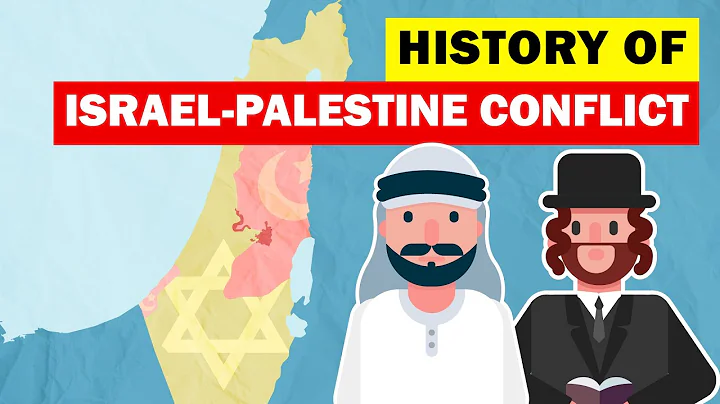Historically, the ancient Jews lived in Palestine for a long time, but were later relocated due to foreign invasion and persecution. The most influential ones include the Babylonian king Nebuchadnezzar II who escorted tens of thousands of Jewish prisoners of war back to his country in 586 BC, the creation of the "Babylonian Captivity ", and the Roman Empire's armed resistance in the 1st and 2nd centuries AD. The violent expulsion of the Jews. After the rise of Islam, Arabs settled here for generations. After World War I, Jews scattered around the world moved to Palestine one after another with the support of the British mandate to rule the area.
1. Based on Middle East
In November 1947, the second session of the United Nations General Assembly passed the resolution on the partition of Palestine with 33 votes in favor, 13 votes against, and 10 abstentions (more than a 2/3 majority). It called for the establishment of an independent Arab state, an independent Jewish state and an international special regime for the city of Jerusalem within two months of the end of the British Mandate.
The picture below (picture 1) - the Palestinian-Israeli partition plan
In the eyes of Arabs, this is an extremely unfair power plan. It gave the Jews, who accounted for 1/3 of the total population of Palestine, 56% of the land (14,900 km2) to establish the country, while the Palestinian Arabs, who accounted for 2/3 of the total population, only received 43% of the land (11,200 km2). Moreover, the suffering of the Jews was not caused by the Arabs, so how can they sacrifice their own interests for others? 
On May 15, 1948, the day after the founding of the state of Israel, tens of thousands of armed forces from the Arab League countries Egypt, Transjordan (renamed Jordan in 1950), Iraq, Syria and Lebanon set foot in Palestine and sent Hope to strangle Jewish power in the cradle.
With the support of the United States and the Soviet Union and the rare breathing space of the armistice, Israel gradually reversed the war situation. The United States, which has grown to become the world's largest power after World War II, has long been coveting the Middle East, which has many strategic chokepoints and rich oil resources. It hopes that Palestine will become a "special springboard to enter the Near East and squeeze out the British" and a frontier to contain the power of the Soviet Union. . Eleven minutes after Israel's announcement of statehood in Tel Aviv was broadcast on the airwaves, the White House announced that "the United States has de facto recognized the government of Israel." The Soviet Union also provided support in seeking to seize its sphere of influence. It is a miracle that the United States and the Soviet Union supported a new regime at the same time, not to mention that it happened at a time when the relationship between the two parallel powers was becoming increasingly tense and the Cold War was approaching.
The picture below (picture 2) - Israel after the First Middle East War
 When the first Middle East War ended in 1949, Israel controlled 78% of the total area of Palestine, with an area exceeding the partition of about 6,000 square kilometers and nearly one million Palestinians. Displaced.
When the first Middle East War ended in 1949, Israel controlled 78% of the total area of Palestine, with an area exceeding the partition of about 6,000 square kilometers and nearly one million Palestinians. Displaced.
2. dominates The Third Middle East War
The time has arrived on June 5, 1967. On this day that can be recorded in the history of classic wars, Israel used air strikes as the precursor to sweep across Arab countries in a lightning manner. The more than 400 fighter planes of Arab countries can no longer fly in the sky. Among them, the Egyptian Air Force, which has lost 95%, has been paralyzed. Without the protection of the sky, how could the Arab army resist the elite soldiers and generals who were even more powerful? They suffered a complete defeat in just 6 days.
This Middle East war can be said to have been fought against the backdrop of the gradual development of the Pan-Arab political movement in the 1950s. Israel, which was "fighting for survival," struck preemptively and achieved brilliant results in a very short period of time, occupying Egypt. A total of 65,000 square kilometers of land including the Sinai Peninsula, Syria's Golan Heights, Gaza, and the West Bank, including the Old City of Jerusalem, has effectively improved Israel's strategic disadvantage.
The picture below (picture 3)——Israel after the Third Middle East War
 3. A Long Way to Go
3. A Long Way to Go
After the Fourth Middle East War (the Arab countries hoped to regain the lost land in this battle, in which the Egyptian army used high-pressure water cannons to destroy the Barlev Line of Defense established by the Israeli army on the east bank of the Suez Canal, it is a classic), Israeli Prime Minister Begin shook hands with Egyptian President Sadat and made peace. Israel withdrew from the Sinai Peninsula in exchange for normalization of relations between the two sides and permanent peace.Despite this highlight, due to the complex interests of all parties and the multiple factors involved in religion and ethnicity, the Palestinian refugee issue, the West Bank issue, and the status of Jerusalem are all long-standing obstacles to peace in the Middle East.
The picture below (picture 4) - the current situation of the West Bank
 Today the West Bank is under the jurisdiction of Israel and the Palestinian National Rights Authority. Israel's construction of Jewish settlements and separation walls in the controlled areas have intensified the conflicts between the two sides, and the scattered inspections station, hindering the free flow of people and goods in the Palestinian area, causing the deterioration of the Palestinian economy and humanitarian crisis. Looking at the map of the West Bank, the complexity is staggering, and the stalemate situation is evident. If we want to completely resolve the Palestinian-Israeli issue, we still have a long way to go!
Today the West Bank is under the jurisdiction of Israel and the Palestinian National Rights Authority. Israel's construction of Jewish settlements and separation walls in the controlled areas have intensified the conflicts between the two sides, and the scattered inspections station, hindering the free flow of people and goods in the Palestinian area, causing the deterioration of the Palestinian economy and humanitarian crisis. Looking at the map of the West Bank, the complexity is staggering, and the stalemate situation is evident. If we want to completely resolve the Palestinian-Israeli issue, we still have a long way to go!
Note: Israel withdrew from Gaza in 2005 and is now controlled by the Palestinian Islamic Resistance Force (Hamas).
The picture below (picture 5) - the evolution of Israeli-controlled areas












![Recently, according to Korean media reports - [Korea Daily Business] All members of the Korean boy group WINNER have renewed their contracts with YG! Renewed for 5 years on the 7th anniversary of debut! According to YG news, on the 7th anniversary of their debut yesterday, all me - DayDayNews](https://cdn.daydaynews.cc/wp-content/themes/begin/img/loading.gif)









